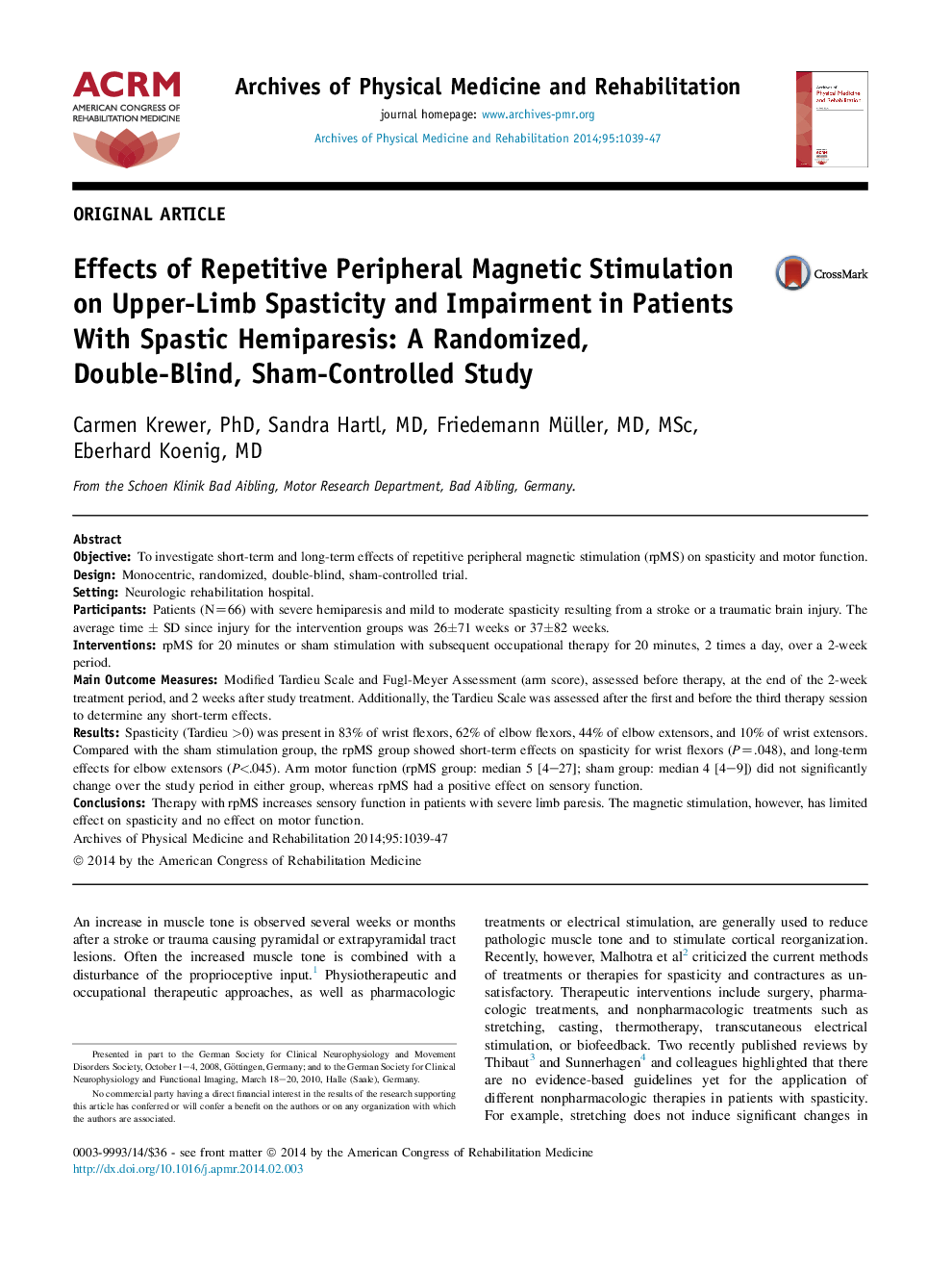| Article ID | Journal | Published Year | Pages | File Type |
|---|---|---|---|---|
| 3448929 | Archives of Physical Medicine and Rehabilitation | 2014 | 9 Pages |
ObjectiveTo investigate short-term and long-term effects of repetitive peripheral magnetic stimulation (rpMS) on spasticity and motor function.DesignMonocentric, randomized, double-blind, sham-controlled trial.SettingNeurologic rehabilitation hospital.ParticipantsPatients (N=66) with severe hemiparesis and mild to moderate spasticity resulting from a stroke or a traumatic brain injury. The average time ± SD since injury for the intervention groups was 26±71 weeks or 37±82 weeks.InterventionsrpMS for 20 minutes or sham stimulation with subsequent occupational therapy for 20 minutes, 2 times a day, over a 2-week period.Main Outcome MeasuresModified Tardieu Scale and Fugl-Meyer Assessment (arm score), assessed before therapy, at the end of the 2-week treatment period, and 2 weeks after study treatment. Additionally, the Tardieu Scale was assessed after the first and before the third therapy session to determine any short-term effects.ResultsSpasticity (Tardieu >0) was present in 83% of wrist flexors, 62% of elbow flexors, 44% of elbow extensors, and 10% of wrist extensors. Compared with the sham stimulation group, the rpMS group showed short-term effects on spasticity for wrist flexors (P=.048), and long-term effects for elbow extensors (P<.045). Arm motor function (rpMS group: median 5 [4–27]; sham group: median 4 [4–9]) did not significantly change over the study period in either group, whereas rpMS had a positive effect on sensory function.ConclusionsTherapy with rpMS increases sensory function in patients with severe limb paresis. The magnetic stimulation, however, has limited effect on spasticity and no effect on motor function.
